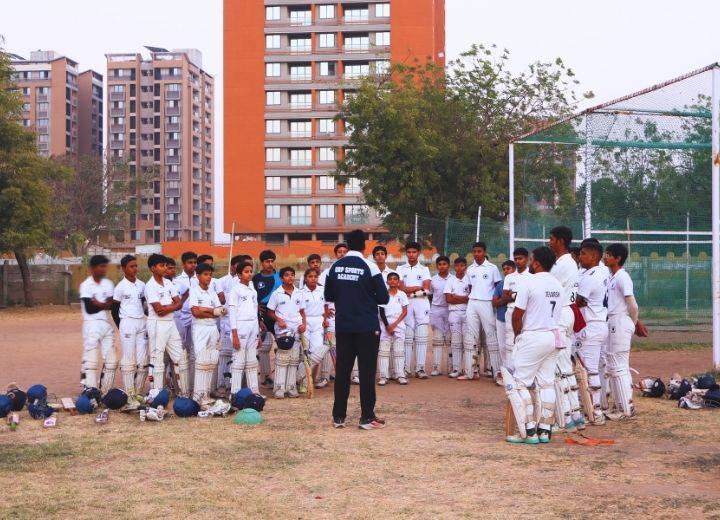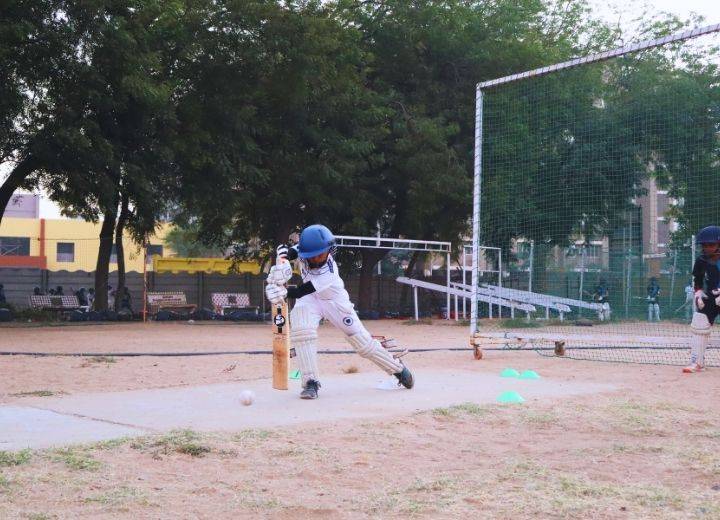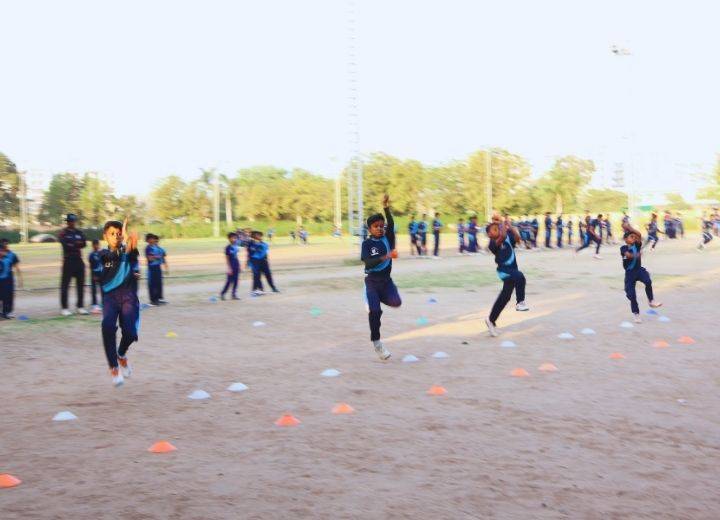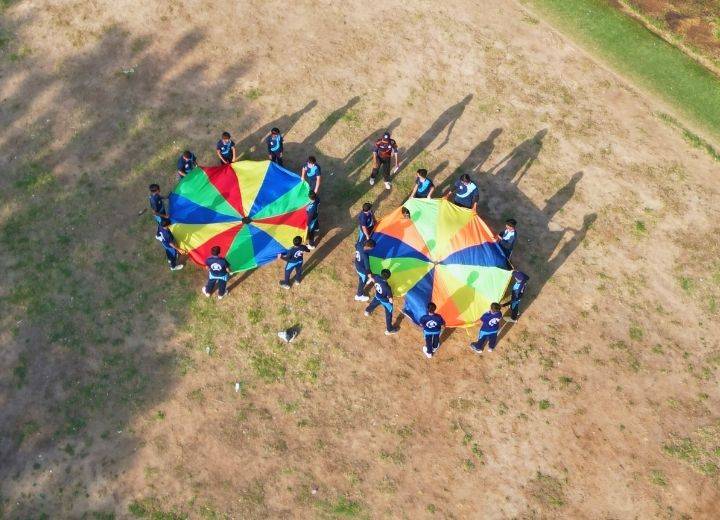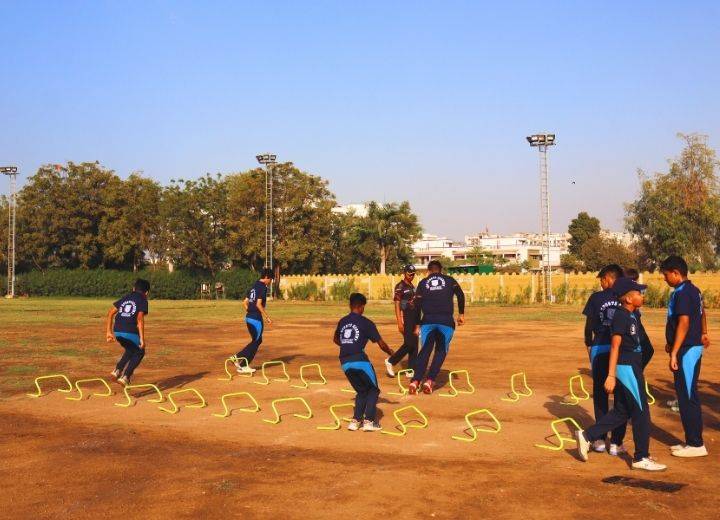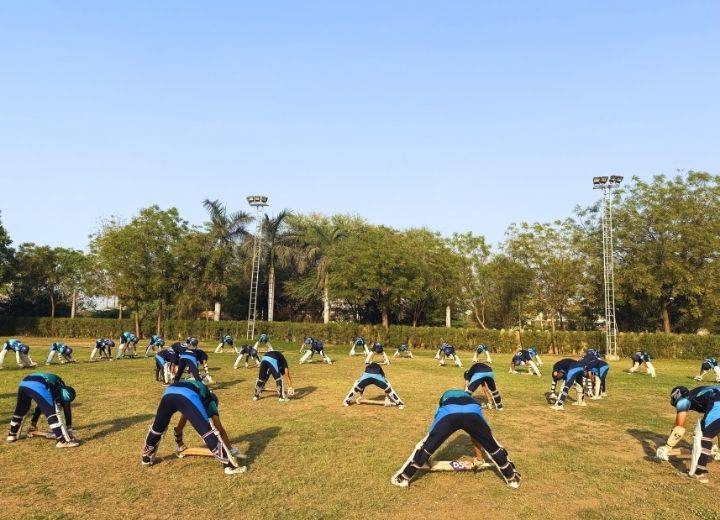GRP Model Explained: Curriculum-Led, Science-Backed Sports Education
India’s Sports Education Revolution Starts In School
India will not win consistently on global stages until sports moves from “extra” to “essential” in schools, families, and policy—with structured curricula, early assessments, and long-term athlete development replacing ad-hoc PE and unplanned training loads.
Coaching vs education
Coaching teaches a sport’s techniques, while sports education builds a grade-like curriculum across movement, psychology, and science from early childhood to adolescence, including warm-up, cool-down, recovery, and age-appropriate progressions to make growth predictable and safer over years. This shift treats physical literacy like academics—developing balance, gait, throwing, coordination, and competitive temperament systematically rather than leaving them to chance in “free PE periods”.
Parents’ mindset
Contrary to common fears, structured sport enhances physiology, mental strength, attention, and grasping power—supporting academics instead of hurting them when loads are planned sensibly within school routines and rest windows. The real danger is overtraining without recovery while juggling school, tuition, and multiple activities; planning weekly loads and prioritizing sleep prevents burnout and protects growth.
Early years matter
Foundational skills start in preschool: balance, jumping, gait mechanics, and basic throws should be taught by trained educators, not replaced by plastic slides and discipline drills. Early skill blocks compound into hormonal, physiological, cognitive, and social gains that improve classroom focus and life skills like handling wins and losses.
School’s pivotal role
- Upgrade PE to curriculum: weekly modules on balance, agility, gait, throws, and sport literacy led by trained staff rather than whistle-and-lines routines and assembly management.
- Run assessments: school-based screening identifies children with natural aptitudes (e.g., throwers, endurance, coordination) and channels them into pathways before talent evaporates.
- Normalize absence for tournaments: celebrate competitors and support make-up work so peers see sport as achievement, not a violation of attendance.
Grassroots detection
Regular, age-appropriate assessments in government and private schools are essential, including in rural and high-altitude regions where environmental conditioning or cultural practices (e.g., archery among tribal communities) may indicate latent sport-specific strengths. Without screening and structured follow-up, early natural advantages go untrained and are lost by adolescence.
India vs China/US
India’s passion is unmatched, but infrastructure, data systems, and long-horizon pipelines lag behind countries that filter talent in primary school, provide facilities, and build athlete development over a decade, not a season. Genetic or physiological assessments, better infrastructure, and transparent pathways dramatically raise the base level from which champions emerge; without them, stories like Neeraj Chopra’s inspire but remain exceptions.
Data and pathways
India needs indigenous data on nutrition, growth, training response, and sport demands rather than importing US/UK tables that don’t match local conditions, just as industry leaders thrived by investing early in data infrastructure. Clear maps exist for academics (e.g., NEET), but most parents lack a sport roadmap; schools and academies must publish transparent paths from screening to district, state, national, and beyond.
Socioeconomics and access
Awareness, not only money, determines outcomes: scholarships, sports schools, and government programs exist, but parents rarely know the steps needed to qualify or progress, leaving capable children under-routed. NGOs and CSR, as seen in leagues and foundations, can accelerate access and culture-building across football, kabaddi, athletics, and more—beyond cricket’s established ecosystem.
Culture and role models
Media and leagues change behavior: after marquee wins or new leagues, enquiries for those sports spike, proving that visible pathways and heroes unlock participation and parental support across classes and cities. Schools magnify this by celebrating student-athletes publicly, attracting peers and forging a culture where sport achievement raises institutional pride and demand.
Health and obesity
Urban child obesity and poor stamina are visible alarms: consistent sport participation recalibrates nutrition literacy, energy systems understanding, and lifestyle habits; recovery, sleep, and locally appropriate diets should be prioritized over fad regimens. Parents must reduce packaged foods, read labels, and center regional, seasonal eating that aligns with geography and culture for sustainable performance and health.
Practical weekly structure
- One primary sport with proper coaching and a measured weekly load, rather than multiple casual classes with no recovery or goals.
- Non-negotiables: warm-up, cool-down, mobility, and at least 1–2 rest days; extra rest during exam weeks to avoid overtraining.
- Progress tracking on fundamentals (balance, gait, coordination, attention) before medal hunting, especially in early phases.
Careers beyond playing
The ecosystem needs more than athletes: educators, biomechanists, S&C coaches, analysts, administrators, school program designers, and data specialists—all roles children can discover early when schools integrate real sports education. Hiring managers increasingly value candidates who played sports for their discipline, time management, and resilience—advantages that translate to any career.
GRP story and approach
The conversation features an educator-coach whose path spans NCC discipline, multi-sport exposure, ICC Level-2 cricket coaching, and founding GRP—Get Ready to Play—in 2017 to deliver curriculum-led, biomechanics-informed programs in Ahmedabad and partner schools with structured warm-ups, periodization, and recovery. The narrative reinforces that multi-disciplinary foundations and long-term planning produce safer, more consistent development for children and youth athletes alike.
What to do next
- Parents: pick one structured program, monitor sleep and food quality, and collaborate with coaches on exam-period load management; measure fundamental skills every term.
- Schools: publish a physical literacy curriculum, schedule screenings twice a year, and offer sport-specific lanes by middle school with load, injury prevention, and attendance flexibility for competitions.
- Policy/CSR: invest in district-level assessments, coach education, and facility gaps for non-cricket sports to prevent talent waste and create visible, fair pathways across India’s diverse regions


